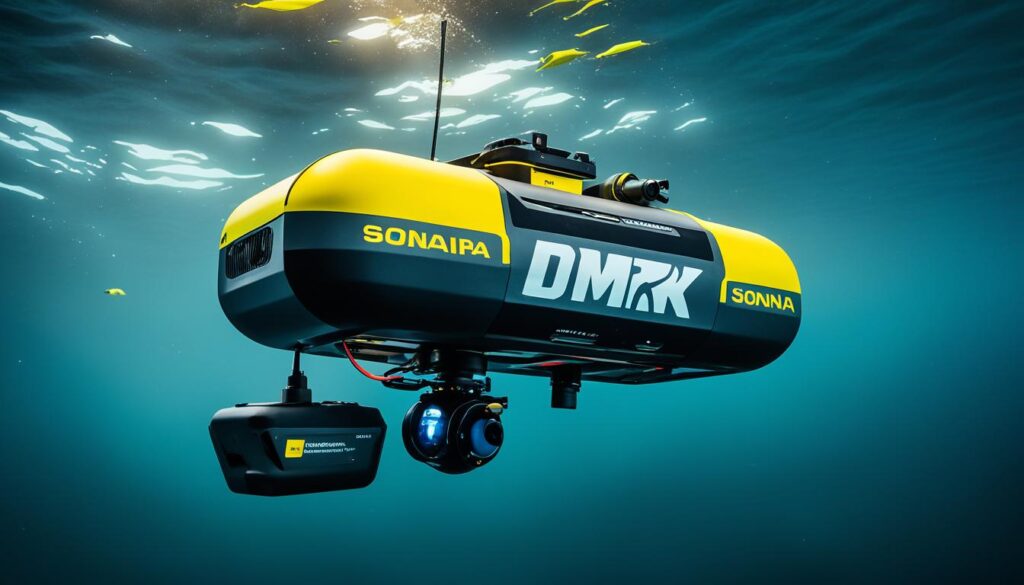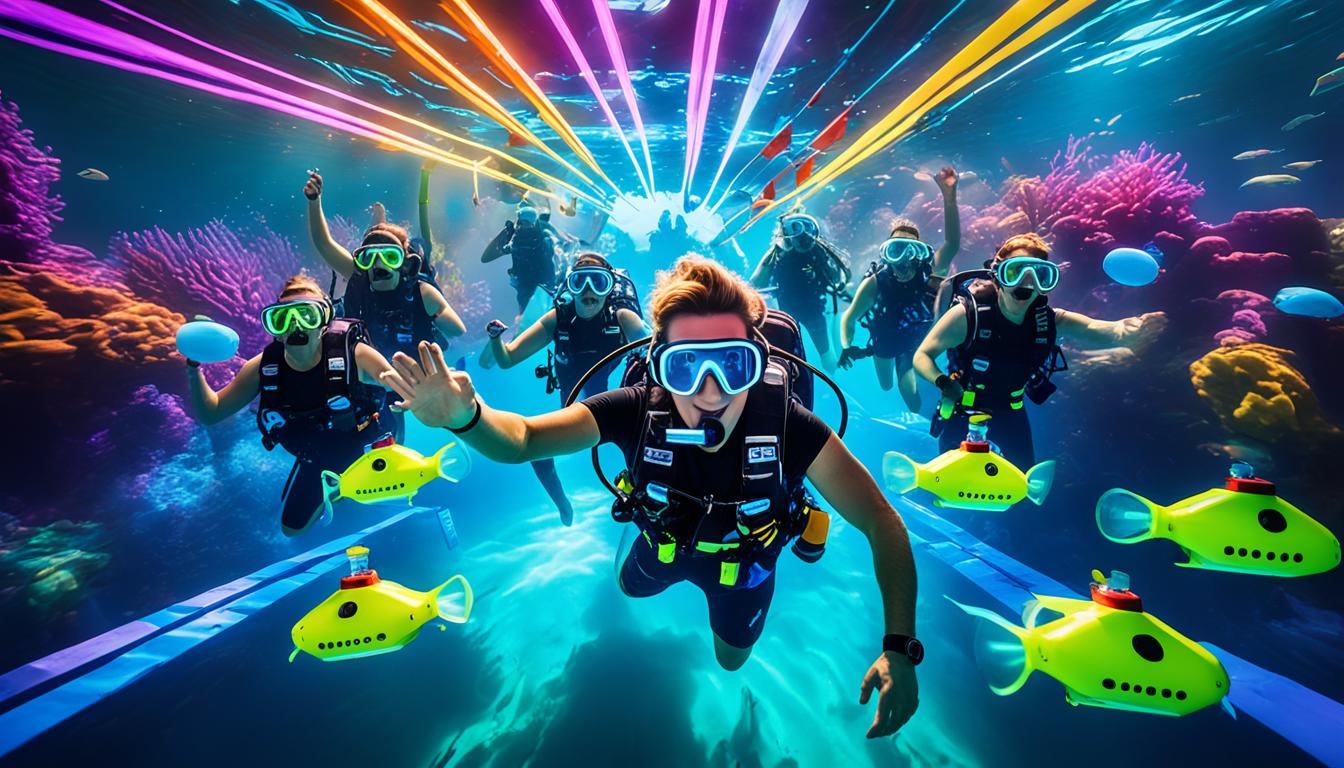- The Sea-Whale 2000 AUV can travel over 2,000 kilometers and dive to depths of 2,000 meters, showcasing exceptional range and depth capabilities.
- Equipped with AI and advanced sensors, this AUV collects vital data on oceanic conditions, such as temperature, salinity, and biological activity.
- Its development is a response to the need for long-term, deep-sea mobile survey operations, particularly in the complex South China Sea region.
- The Sea-Whale 2000 represents a significant step forward in China’s underwater robotics, contributing to both scientific research and strategic interests.
- Understanding the features and implications of the Sea-Whale 2000 can inspire further innovation in marine exploration and technology.
The Pioneering Leap in Ocean Technology: Sea-Whale 2000
Imagine a world where the depths of the ocean, with all its mysteries and wonders, are as accessible and understood as our own backyards. That’s the future the Sea-Whale 2000 AUV is paving the way for. This autonomous underwater vehicle is not just a machine; it’s a harbinger of a new era in marine exploration, where the unreachable becomes the new frontier of discovery.
Revolutionizing Marine Research with the Sea-Whale 2000
The Sea-Whale 2000 is not merely a tool; it’s a game-changer. It’s designed to operate in the deep sea, far beyond the reach of sunlight, where the pressure would crush conventional submersibles like a soda can. Here’s why it matters: the deeper we go, the more we understand not just about the ocean, but about our planet, climate, and even life itself.
From Concept to Reality: The Ideation Behind Sea-Whale 2000
Every groundbreaking invention starts with a bold idea, and the Sea-Whale 2000 is no exception. Conceived to push the boundaries of autonomous navigation and deep-sea data collection, this AUV was born out of a vision to expand our oceanic horizons. But how did this vision turn into a tangible, trailblazing technology? It began with identifying the need to probe the ocean’s secrets more deeply and efficiently than ever before.
Concept and Design of Sea-Whale 2000
The Sea-Whale 2000 was designed with one goal in mind: to explore where no one has explored before. To achieve this, the designers focused on endurance, depth, and intelligence. With a sleek, hydrodynamic body, it cuts through the water with minimal resistance, while its power-efficient systems ensure it can traverse vast oceanic expanses without resurfacing for weeks on end.
- Endurance: Capable of multi-week missions without the need for immediate human intervention.
- Depth: Designed to withstand the immense pressures of deep-sea environments.
- Intelligence: AI-driven systems for autonomous navigation and decision-making.
Addressing Challenges in the South China Sea with AUV Technology
The South China Sea poses unique challenges: it’s not only deep and vast but also geopolitically complex. The Sea-Whale 2000 addresses these challenges head-on. Its long-range capabilities mean it can cover large areas without being detected, gathering data that’s crucial for both scientific and strategic purposes.
Most importantly, it’s equipped to handle the unpredictable conditions of this contested sea. The Sea-Whale 2000 can maneuver around obstacles, map the ocean floor, and collect environmental data, all while operating autonomously in a remote and often turbulent environment.
Design Elements Catered for Deep-Sea Exploration
Let’s dive a bit deeper into the design. The Sea-Whale 2000’s structure is built to withstand extreme underwater pressure. Its skin is not just tough; it’s smart, embedded with sensors that can detect changes in the environment and adjust the vehicle’s buoyancy accordingly. This means it can glide through water columns, ascend, and descend with the grace of a whale, all while collecting high-resolution data that was once thought impossible to obtain.
Technical Specifications of Sea-Whale 2000
When we talk about the Sea-Whale 2000, we’re talking about a powerhouse of technology. It can dive up to 2,000 meters, which is deeper than the tallest skyscrapers. With an operational range of over 2,000 kilometers, it’s like sending a robotic explorer from New York to Denver underwater without stopping.
Unveiling Sea-Whale 2000’s Long-Range Capabilities
But it’s not just about going far and deep. It’s about what the Sea-Whale 2000 does on its journey. Picture this: as it travels, it’s mapping the seafloor, detecting thermal vents, and even tracking marine life. Its sensors are like the vehicle’s eyes and ears, feeding back a stream of data that gives us a real-time picture of the underwater world.
The AI and Sensory Matrix: A Glimpse Under the Hood
Now, let’s get technical. The brain of the Sea-Whale 2000 is its AI, an intricate network of algorithms and processing power that enables it to make decisions autonomously. This AI is supported by a sensory matrix that rivals the best nature has to offer. It includes sonar for navigation, cameras for visual inspection, and chemical sensors to detect changes in water composition. This suite of technology allows the Sea-Whale 2000 to not just collect data, but to understand it, react to it, and even learn from it over time.
Development and Testing: Making Sea-Whale 2000 a Reality
Bringing the Sea-Whale 2000 from concept to a fully functioning AUV required meticulous development and rigorous testing. Engineers and scientists worked hand in hand to iterate designs, ensuring that each component could withstand the harsh conditions of deep-sea exploration. It’s a process that demanded not only innovation but also resilience, as each test brought them closer to a reliable and effective vehicle ready for deployment.
During its testing phase, the Sea-Whale 2000 was subjected to a variety of simulated and real-world scenarios. This included deep dives, long-duration missions, and navigation through complex underwater terrains. Each successful test was a triumph, marking another step towards unlocking the ocean’s secrets.
China’s Strides in UUV Technologies and Global Impact
China’s development of the Sea-Whale 2000 is a clear demonstration of the nation’s commitment to becoming a leader in underwater robotics. This AUV is not just a national achievement; it’s a global milestone. The technology behind it has the potential to influence ocean exploration and marine research worldwide, setting new benchmarks for what autonomous vehicles can achieve beneath the waves.
Field Tests: Verifying Sea-Whale 2000’s Endurance and Versatility
Field tests are where theory meets reality. The Sea-Whale 2000 underwent extensive trials in the South China Sea, where it proved its mettle. Over the course of 37 days, it traveled more than 2,000 kilometers, gathering data and providing insights into one of the world’s most dynamic marine environments. These field tests confirmed its endurance and versatility, showcasing its capability to operate autonomously in a range of conditions.
Strategic and Scientific Implications of Sea-Whale 2000
The Sea-Whale 2000 is more than an engineering marvel; it’s a strategic asset and a scientific boon. Its development signals a shift in maritime capabilities, offering new opportunities for monitoring, research, and even territorial claims. In the scientific realm, the data it collects could lead to breakthroughs in our understanding of climate change, marine biodiversity, and underwater geology.
Empowering Research and Strategy in the South China Sea
In the South China Sea, where territorial disputes are as deep as the waters, the Sea-Whale 2000 serves a dual purpose. It aids in scientific discovery while also playing a role in strategic positioning. By providing a constant stream of detailed environmental data, it empowers decision-makers with information that is both scientifically valuable and strategically significant.
Utilizing AUVs for Breakthroughs in Marine Science
Marine science stands on the cusp of a revolution, with AUVs like the Sea-Whale 2000 leading the charge. They enable researchers to conduct long-term observations and collect data in real-time, which can lead to discoveries about ocean currents, underwater ecosystems, and the impacts of climate change. This data is invaluable, as it helps us protect our oceans and manage their resources more sustainably.
The Broader Picture: Sea-Whale 2000’s Role in the Future of Ocean Exploration
As we look to the future, the role of AUVs like the Sea-Whale 2000 in ocean exploration cannot be overstated. They are the vanguard of a new wave of technology that will deepen our connection with the ocean. With enhanced data collection capabilities, they will inform conservation efforts, drive economic opportunities, and perhaps even uncover secrets that have lain hidden beneath the waves for millennia.
The Potential for Enhanced Oceanic Data Collection
Consider the potential: with fleets of AUVs like the Sea-Whale 2000, we could have a detailed, dynamic map of the ocean’s conditions. This would not only revolutionize marine science but also provide critical information for shipping routes, fishery management, and disaster prevention. The possibilities are as vast as the ocean itself.
Setting new benchmarks in AUV technology isn’t just about breaking records; it’s about opening doors to new possibilities. The Sea-Whale 2000 is doing exactly that, by proving that AUVs can be more resilient, more intelligent, and more autonomous than ever before. This leap forward is not just a step into the deep blue but a giant dive into the future of oceanic exploration.
Frequently Asked Questions
How does the Sea-Whale 2000 navigate underwater?
Navigating the mysterious depths of the ocean requires more than a good sense of direction; it requires cutting-edge technology. The Sea-Whale 2000 uses an advanced form of sonar, combined with inertial navigation systems, to map its surroundings and plot its course. Even in the darkest waters, where GPS signals can’t reach, it finds its way with precision and purpose.
It’s like having an expert navigator who can see in the dark, feel the ocean’s pulse, and remember every twist and turn. The Sea-Whale 2000’s navigation is a symphony of technology and innovation, ensuring that no matter where it goes, it’s never truly lost.
Moreover, the AI onboard is constantly learning from its environment, improving its navigation with each mission. This self-improvement aspect ensures that the Sea-Whale 2000 gets smarter, better, and more efficient with every dive.
What kind of data can Sea-Whale 2000 collect?
The Sea-Whale 2000 is a treasure trove of information, collecting a wide array of data that includes:
- Temperature profiles that help understand climate patterns.
- Salinity levels that reveal the health of marine ecosystems.
- Currents and tides that can aid in navigation and resource management.
- Biological data that could lead to the discovery of new marine species.
- Geological data that helps map the seafloor and locate resources.
This data isn’t just numbers and graphs; it’s a window into the ocean’s soul, offering insights that can help protect, preserve, and understand the marine world like never before.
How will the Sea-Whale 2000 impact future maritime territory monitoring?
When it comes to maritime territory monitoring, the Sea-Whale 2000 is a game-changer. Its ability to discreetly survey large areas makes it an invaluable tool for nations to monitor their waters, enforce laws, and protect their interests. Here’s what it means:
- Enhanced surveillance capabilities without the need for manned vessels.
- Detailed environmental monitoring to support sustainable resource management.
- Improved detection of unauthorized activities, such as illegal fishing or pollution.
As a result, the Sea-Whale 2000 isn’t just an observer of the ocean; it’s a guardian, ensuring that the rules of the sea are followed, and its riches are shared responsibly.
Can the Sea-Whale 2000 be used for purposes other than research?
Absolutely! While its primary mission may be scientific research, the Sea-Whale 2000’s capabilities extend far beyond that. Its potential applications include:
- Environmental monitoring for oil and gas exploration.
- Underwater infrastructure inspection, such as pipelines and cables.
- Search and rescue operations in deep-sea environments.
- Historical shipwreck discovery and underwater archaeology.
So, whether it’s helping to find lost treasures of the past or ensuring the safety of our modern seaways, the Sea-Whale 2000 is there, ready to serve a multitude of purposes.
What sets the Sea-Whale 2000 apart from other AUVs?
What really sets the Sea-Whale 2000 apart from other AUVs is its combination of endurance, depth capability, and intelligence. This trifecta allows it to take on missions that were once thought impossible. But let’s break it down:
Endurance: It can operate for over a month without human intervention, making it ideal for lengthy research missions.
Depth: Diving up to 2,000 meters, it can explore some of the most challenging underwater environments on Earth.
Intelligence: With AI at its core, it’s not just following commands; it’s making decisions, adapting to its environment, and constantly learning.
In essence, the Sea-Whale 2000 is not just another AUV; it’s a leap into the future of autonomous underwater exploration.







